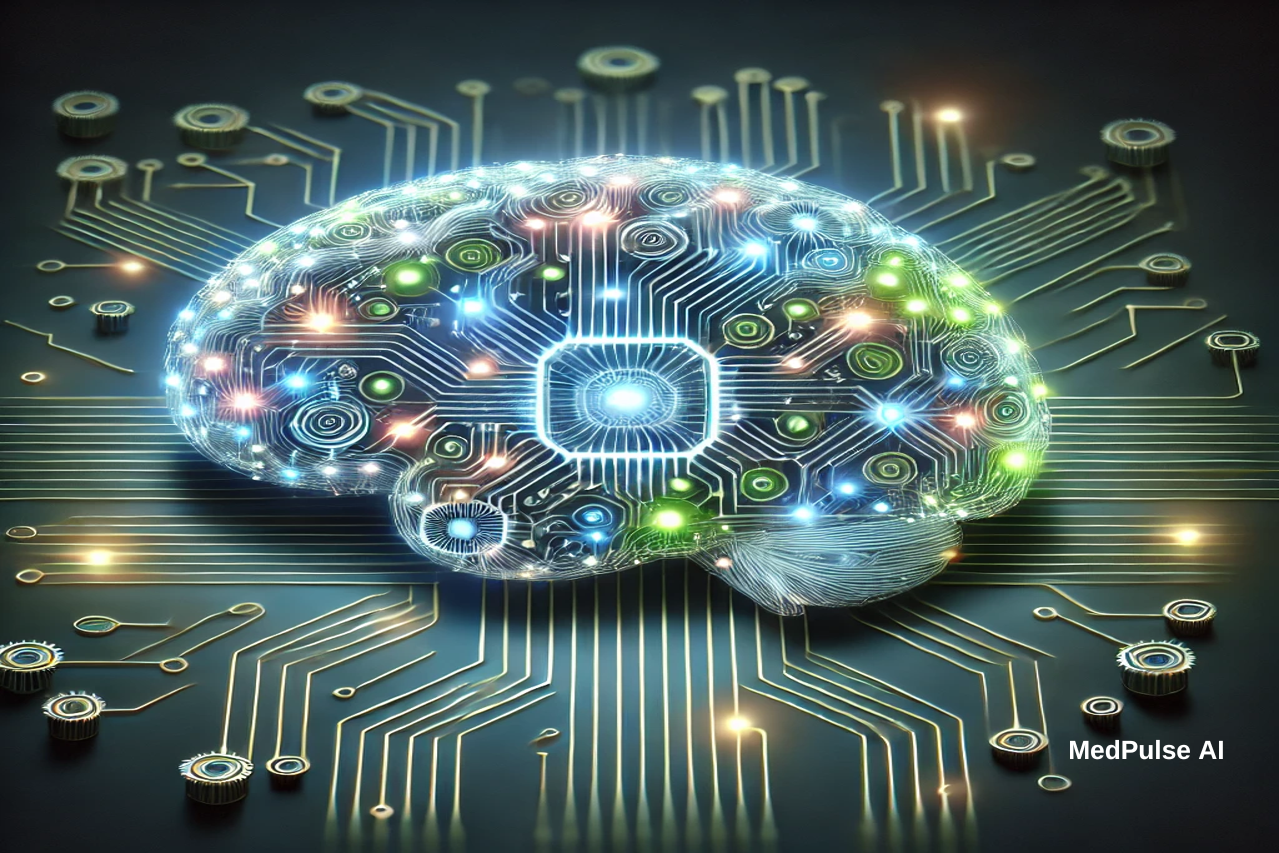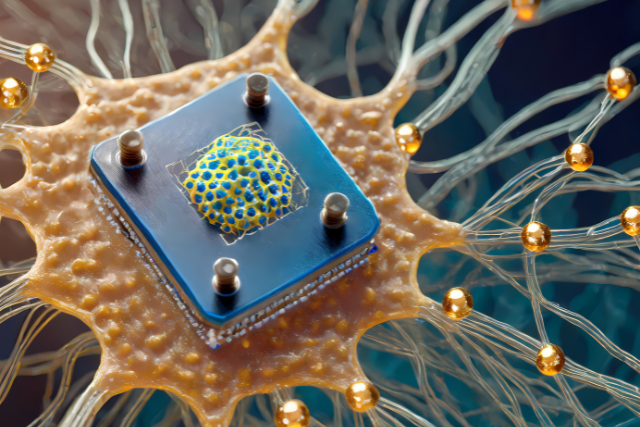When you hear the term “supercomputer,” you might imagine a massive, complex machine reserved for tech-savvy scientists working on futuristic projects. While it’s true that supercomputers are incredibly powerful, their influence extends far beyond the tech world. These cutting-edge systems play a crucial role in improving everyday life, addressing some of humanity’s biggest challenges, and making our world safer, healthier, and more sustainable.
This piece is part 3 of a series exploring how supercomputers are transforming various aspects of our lives, from groundbreaking advancements in AI to their impact on healthcare and everyday technology (part one: From Science Fiction to Reality: The Role of Supercomputers in AI Evolution, part two: How Supercomputers Are Shaping the Future of AI in Healthcare), these mighty machines impact our lives in ways you might not expect.
What Are Supercomputers?
Before diving into their applications, let’s break down what a supercomputer is. At its core, a supercomputer is a high-performance system capable of processing vast amounts of data at speeds far beyond what ordinary computers can handle. Imagine your laptop—then multiply its power millions of times over.
Supercomputing Timeline Highlights
- 1964: CDC 6600, the first supercomputer.
- 1976: Cray-1, the first supercomputer to use vector processing.
- 1993: The introduction of the TOP500 list, a biannual ranking of the world’s fastest supercomputers.
- 2008: IBM Roadrunner, the first supercomputer to achieve 1 petaflop.
- 2018: Summit, breaking records in AI and hybrid computing.
- 2022: Frontier, the first official exascale supercomputer.
Supercomputers work on problems that require enormous computational power, such as simulating weather patterns, analyzing genetic data, or running complex AI models. These tasks are too large and time-consuming for regular computers, but supercomputers handle them with ease.
Weather Predictions and Natural Disaster Preparedness
One of the most relatable and life-saving uses of supercomputers is in weather forecasting. Systems like Frontier, currently one of the most powerful supercomputers in the world, analyze massive datasets from satellites, weather stations, and ocean buoys to create accurate weather models. These predictions are not just about deciding whether to carry an umbrella—they can save lives.
Predicting Hurricanes and Tornadoes
Supercomputers can simulate the development and movement of hurricanes and tornadoes days or even weeks in advance. This information allows communities to prepare, evacuate, and protect themselves before disaster strikes. For example, the National Weather Service relies on supercomputers to issue timely warnings, reducing the potential loss of life and property.
Mitigating Climate Change
Climate change is one of the greatest challenges of our time, and supercomputers are essential in tackling it. They can simulate complex interactions in Earth’s atmosphere, oceans, and ecosystems to predict the long-term impacts of rising temperatures. These insights guide policymakers in developing strategies to reduce greenhouse gas emissions and prepare for a changing climate.
Real-life Impact: Think about how early hurricane warnings help families secure their homes or how climate projections influence urban planning to mitigate flooding. These supercomputer-driven models directly shape decisions that affect millions of people.
Transforming Healthcare and Medical Research
Supercomputers are transforming healthcare in profound ways, from accelerating drug discovery to improving personalized medicine and optimizing hospital systems.
Developing new drugs often takes years of research and billions of dollars. Supercomputers like Summit speed up this process by simulating how potential drugs interact with human cells. During the COVID-19 pandemic, supercomputers identified promising antiviral compounds in a fraction of the time it would take using traditional methods. This ability to process vast amounts of data and test millions of drug combinations rapidly is revolutionizing how we combat diseases like cancer, Alzheimer’s, and infectious outbreaks.
Summit’s Innovations
Summit, developed by IBM in collaboration with NVIDIA and the U.S. Department of Energy, is one of the most powerful supercomputers ever built, housed at Oak Ridge National Laboratory (ORNL) in Tennessee, USA. Launched in 2018, it was the first supercomputer to surpass the exaflop threshold for specific AI-related tasks, achieving over 1 exaflop(one quintillion calculations per second) in mixed-precision computing.
Powered by IBM Power9 CPUs and NVIDIA Tesla V100 GPUs, Summit’s hybrid architecture made it a trailblazer in combining traditional high-performance computing (HPC) with AI and machine learning. With a peak performance of 200 petaflops for scientific workloads and a storage capacity of 250 petabytes, Summit became an essential tool for solving some of the world’s most complex problems, including advancements in drug discovery, genomics, and climate modeling.
Summit’s legacy is particularly notable in its application to real-world challenges. During the COVID-19 pandemic, it rapidly identified potential antiviral compounds, accelerating the drug discovery process. In healthcare, it has revolutionized precision medicine by analyzing genetic data to create tailored treatments for diseases like cancer.
Summit’s computational power has also been pivotal in climate science, simulating long-term effects of global warming, and in physics, helping to analyze gravitational waves and model supernova explosions. Although it has since been surpassed by exascale systems like Frontier, Summit remains a landmark achievement in supercomputing, bridging the gap between traditional HPC and the emerging era of AI-driven science.
Personalizing Medicine
Healthcare isn’t one-size-fits-all. Supercomputers analyze genetic data to create tailored treatment plans for individual patients, known as personalized medicine. For instance, they can identify which cancer therapies are likely to work best for a specific person based on their genetic makeup, improving outcomes and reducing unnecessary side effects.
Optimizing Healthcare Delivery
Supercomputers don’t just work in labs—they also improve how hospitals operate. By analyzing patient flow, resource allocation, and treatment outcomes, these systems help optimize healthcare delivery. This means shorter wait times, better resource management, and improved patient care.
Imagine receiving a faster diagnosis for an illness, knowing your treatment is personalized to you, or benefiting from a hospital that runs more efficiently—all made possible by supercomputers.
Advertisement

Ensuring Food Security
Agriculture might not be the first industry that comes to mind when you think of supercomputers, but these systems are critical for feeding the world’s growing population. Supercomputers analyze weather patterns, soil conditions, and crop yields to help farmers make informed decisions.
Predicting Crop Yields: By simulating the impact of weather and environmental changes, supercomputers can predict which crops will thrive in specific regions. This helps farmers plan better and reduces the risk of crop failures.
Combating Pests and Diseases: Supercomputers also track the spread of pests and crop diseases, enabling early interventions that protect food supplies. This technology is vital for ensuring global food security, especially in regions heavily impacted by climate change.
Advancing Everyday Technology
Supercomputers play a behind-the-scenes role in improving the technology we use daily, from smartphones to self-driving cars.
Enhancing AI and Machine Learning: AI relies on massive datasets for training, and supercomputers provide the computational power needed to develop smarter algorithms. Whether it’s voice recognition software, language translation apps, or recommendation systems on streaming platforms, supercomputers help make these technologies faster and more accurate.
Improving Transportation Systems: Supercomputers analyze traffic patterns to optimize transportation networks. This includes everything from designing safer self-driving cars to reducing traffic congestion in major cities. Your GPS giving you the fastest route home or your car’s autopilot system avoiding an accident could be the result of supercomputer-enhanced AI.
Advertisement

Making Space Exploration Possible
Even beyond Earth, supercomputers are critical for exploring the final frontier. They process data from telescopes and simulate conditions on other planets, helping scientists understand the universe. Missions like NASA’s search for life on Mars depend on supercomputers to analyze data and plan next steps.
Insights gained from space exploration often have unexpected benefits on Earth, from advances in materials science to new medical technologies.
Why Supercomputers Matter to You
You may not interact directly with a supercomputer, but its influence touches many aspects of your daily life:
- Weather apps: The forecasts you rely on are powered by supercomputers analyzing vast amounts of meteorological data.
- Medical advancements: Treatments and vaccines developed with the help of supercomputers save lives and improve health outcomes.
- Efficient systems: Optimized public services, from traffic management to healthcare delivery, rely on supercomputer-driven insights.
These machines work tirelessly behind the scenes, solving problems that improve safety, health, and quality of life for everyone.
A Future Powered by Supercomputers
As supercomputers continue to evolve, their applications will only expand. Imagine:
- Real-time disease outbreak tracking to prevent pandemics.
- Smarter, more sustainable cities designed with supercomputer insights.
- Breakthroughs in renewable energy technology to combat climate change.
Supercomputers are more than technical marvels—they are tools for solving humanity’s greatest challenges. The next time you check the weather, get a medical diagnosis, or enjoy a smooth commute, you might just have a supercomputer to thank.




